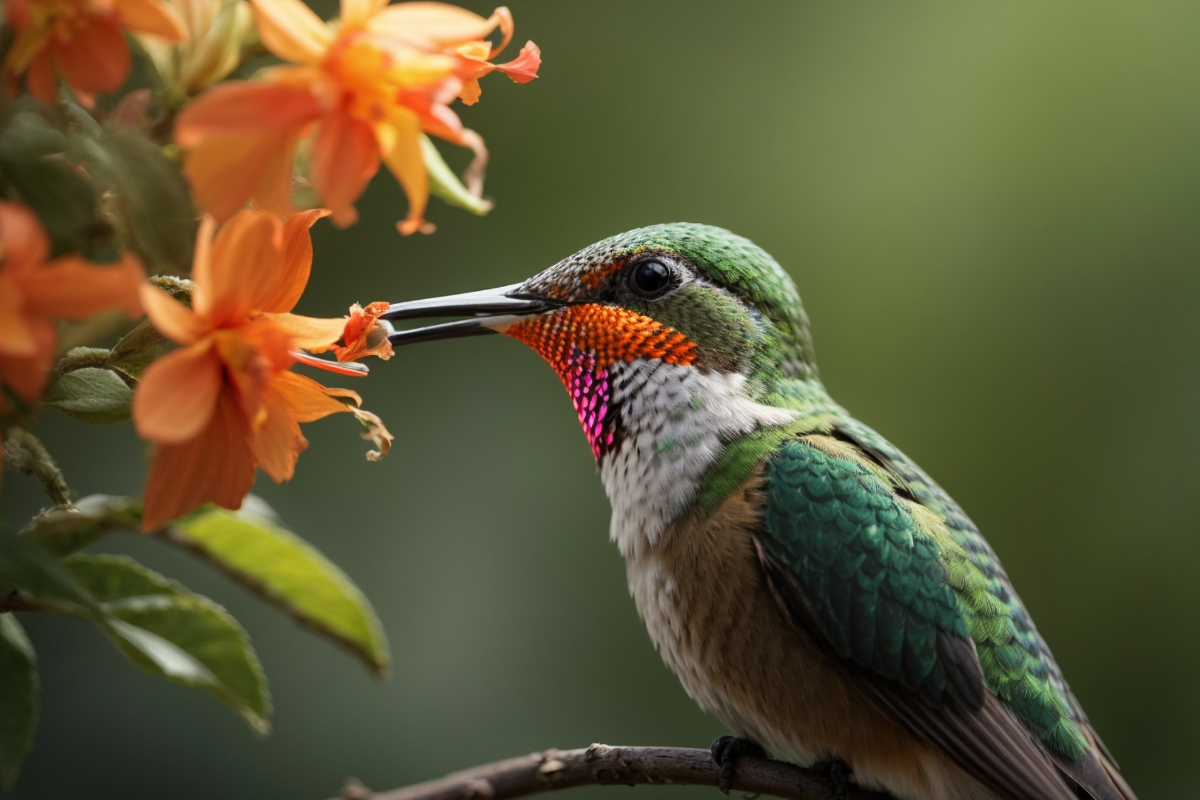The warm weather in Kansas is eagerly awaited by hummingbird enthusiasts, as it signals the arrival of these beautiful birds to the state. Hummingbirds are neotropical migrants, meaning they travel long distances throughout the year in search of tropical regions with ideal living conditions for feeding and breeding.
While hummingbirds passing through Kansas only stay for a short period of time, there is one species that is frequently seen in the state. So, when exactly do these birds leave Kansas?
When Do Hummingbirds Leave Kansas City?
Hummingbirds begin to leave Kansas City from late July to early October. By the end of October, the last of these migratory hummingbirds will have departed from the state, migrating south to warmer areas in Central America and Mexico. This gradual departure allows late-straggling migrants more time to refuel their bodies before embarking on their southward journey. The timing of hummingbird migration is guided by their innate circadian and circannual rhythms.
What Species Of Hummingbirds Can Typically Be Found In Kansas City?
Among the over 350 hummingbird species worldwide, up to 8 species migrate to Kansas City, with the Ruby-throated hummingbird being the most common. These birds are easily identified by their ruby-colored throats. Male Ruby-throated hummingbirds have brilliant colors with a ruby throat, emerald feathers, and a white collar, while females have green streaks with white feathers. Other migratory species that can be found in Kansas City include Allen’s, Anna’s, Black-chinned, Broad-tailed, Calliope, Costas, and Rufous hummingbirds.
Where Can You Find Hummingbirds In Kansas City?
Hummingbirds in Kansas City are particularly abundant in areas with pine, hardwood, or mixed woodlands. These woodlands are prevalent in the eastern and southeastern parts of Kansas, including the Kansas City area, extending towards Wichita, and bordering Oklahoma and Missouri.
When Do Hummingbirds Arrive In Kansas City?
Hummingbirds begin their migration to Kansas City from early to mid-April. As the weather warms up at the beginning of summer, these birds start arriving in abundance. During this time, they have access to an abundant food supply, mainly nectar from flowers, which is their primary source of food. Male hummingbirds arrive earlier than females to establish their territories.
How Do The Migration Patterns Of Hummingbirds In Kansas City Change?
Migration patterns among Kansas City hummingbirds can change due to various factors, with weather conditions being the primary determinant. Hummingbirds migrate in search of warmer climates and abundant supplies of their primary food sources, including nectar from flowers and insects. Environmental factors also play a role in their migration patterns, as the availability of insects, an essential component of their diet, depends on the state of the environment.
What Kinds Of Plants Should Be Grown To Attract Hummingbirds In Kansas City?
To attract hummingbirds in Kansas City, it is best to grow native, pollinator-friendly plants with tabular blooms that contain a lot of nectar. Hummingbirds are attracted to tubular-shaped flowers like hostas, hibiscus, and morning glory. Instead of cultivating invasive plants, it is recommended to plant a variety of native species such as impatiens, petunias, columbines, daylilies, bee balms, cleomes, and lupines.
Can You Attract Hummingbirds by Cultivating Insect-Friendly Plants?
Hummingbirds feed on insects in addition to nectar from flowers. Insects provide them with fats, protein, and salts that nectar does not contain. Baby hummingbirds rely on these nutrients to grow into healthy adults. To attract insects to your garden, you can grow nectar-producing plants that are insect-friendly. It is important to avoid using chemicals like pesticides, chemical fertilizers, and herbicides when growing your plants, as hummingbirds depend on insects for their diet.
Attracting Hummingbirds With Feeders In Kansas City
In addition to planting nectar-rich and insect-friendly plants, you can attract hummingbirds by using feeders. These feeders are filled with sugar water, which serves as a supplement for the birds. It is important to change the sugar-water solution often to prevent bacterial growth. Brightly colored feeders in shades of red or orange are most effective in attracting hummingbirds. If you are unable to use feeders, providing water sources and potted flowers can also attract hummingbirds.
When Should You Put Up Your Hummingbird Feeders In Kansas City?
To attract the first set of migrating hummingbird species to Kansas City, it is best to put up your feeders early in April. Male hummingbirds arrive first, followed by females. Hummingbirds found in Kansas after June are likely to stay throughout the summer.
When Should Hummingbird Feeders Be Taken Down In Kansas City?
Hummingbirds typically leave Kansas by late October. If you haven’t seen any hummingbirds at your feeder for about 2 weeks, it is safe to take them down in November. However, you can leave your feeders out to provide food for old and injured birds that are unable to migrate during the winter.
Where Do Kansas City Hummingbirds Migrate To In The Winter?
After leaving Kansas City, hummingbirds migrate to overwintering areas in Mexico, Guatemala, Belize, El Salvador, and Panama.
How Long Does It Take a Kansas City Hummingbird to Migrate?
The migration time of hummingbirds varies based on their destination and flying speed. Flying at an average speed of 30 miles per hour, hummingbirds can cover a distance of 1400 miles from Kansas to the border with Mexico in approximately 46 hours. For destinations like Panama, which is about 3800 miles away, the migration can take up to 127 hours.
Conclusion
Hummingbird arrival times may vary across different regions of Kansas due to the state’s size. If you haven’t seen hummingbirds in your area yet, they are likely on their way. Creating a welcoming garden environment with native plants and feeders can increase the chances of attracting these delightful birds.
